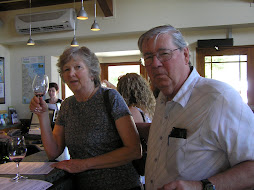





As we have learned from previous stops at other sites, one learns more from talking with Park Rangers and other staffers than from all of the exhibits in the museum.
Consider the situation that FDR confronted when he was elected in 1932 – a two-pronged challenge consisting of
a) thirteen million men without jobs in the U.S.
b) a charismatic but dangerous leader emerging in Germany
First the unemployed – remember that the U.S. had only some 130 million total population and this was ten percent. But take out the women and it's now twenty percent, still further take out the children and the elderly and you're looking at about thirty-five percent unemployment. Add to that the poverty that existed even when some of the men were employed and you've got a monumental problem.
Second, FDR had read Mein Kampf when it came out and recognized what it represented – he made the statement at that time "We'll have to have a war with this fellow within ten years – if he is to be stopped at all!" Put this in the context of one above, meaning a country in tatters facing an inevitable war of sizable proportions, and you've got a huge problem.
If you view the federal government as a powerful force that should be put into positive action to improve the common good of all the people of the country, i.e., a Socialist view as opposed to a view such as that of Grover Norquist ("shrink the federal government until it is so small it can be drowned in the bathtub"), then you can go into action creating programs to put people to work at projects that enhance the country's infra-structure and recreational facilities, etc.
One interesting new insight, not in any of the exhibits but mentioned by two of the staff, came in the person of one Louie Howe, described as the only person who was a close friend of both FDR and Eleanor. He is given the credit for the idea of the fireside chats as a way to communicate with the American people. One biographical sketch of Howe describes him as "the man who created FDR as President." Others, and the staffers, attributed many of the New Deal programs to him, as well as the text of many of FDR's speeches.
Another new insight, in many of the exhibits, was that FDR's contacts with the people of Warm Springs gave him ideas for some of the programs. In fact it's in his own words that the Rural Electrification Administration arose because of the fact that his electric bills at his home in Warm Springs were five times as much as at his home in Hyde Park.
The complexity of FDR's work is best seen in his design and implementation of the REA. He was not sure it would work, but wanted to try it, so did not want it to be cast in stone (as a law.) He had plenty of opposition in Congress to anything that smelled of liberalism, to say nothing of the extremely pro-active programs he was proposing, and did not want that battle. Then there was the Supreme Court which had been giving him grief on the same basis as some of those in Congress. The solution – establish the program by Executive Order – easily withdrawn, not subject to Congressional approval, not subject to review by the Court . . .
Ultimately the success of his program for rehabilitating the country and improving the lot of the poor and powerless can be found in the industrial might of the U.S. in the early 1940's as it produced war materiel for its Allies and built its own military in anticipation of the war soon to follow.
The following quote from "delanoye.org" describes the events of the last day of FDR's life. I've included both of "The Unfinished Portrait" and the complete rendering of the similar portrait done by the artist from her memory of that day.
On Monday, April 9, Lucy Rutherford, accompanied by her painter friend, Elizabeth Shoumatoff arrived to spend the final week of the vacation with the President. Lucy and Roosevelt met when he was assistant secretary of the navy, and FDR became quite smitten with her. Lucy brought Shoumatoff with her to paint a portrait of Roosevelt during their stay.
On April 11, Roosevelt worked on a draft of his upcoming Jefferson Day speech, well-crafted words and sentiments that would mirror his faith in the American spirit: "The only limit to our realization of tomorrow, will be our doubts of today. Let us move forward with strong and active faith."
At noon the following day, Elizabeth Shoumatoff began work on FDR's portrait. The President sat in the living room dressed in a double-breasted gray suit and crimson tie. Surrounded by Lucy and several others, Roosevelt sifted through a stack of papers as Shoumatoff sketched.
At around 1:00 p.m. Eastern Time, the butler brought FDR and his party their lunch. At that moment, Roosevelt seemed agitated and flinched in his chair. An assistant asked the President if he needed help. FDR's head went forward. He gripped his head with his left hand and said, "I have a terrific headache." They would be his final words. The President collapsed and lost consciousness.
End quote . . .
Clara noted on the reading with this "unfinished" portrait the comment "after the death of FDR the artist picked up her paints and supplies, and she and Lucy left" -- the only mention of Lucy either of us saw (or heard) in the entire exhibit.

No comments:
Post a Comment